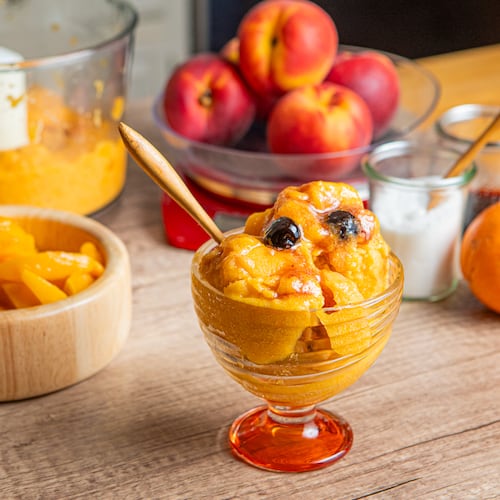For sale at local farmers markets
Just coming in at local markets: prickly pear fruit
Vegetables and fruits: apples, arugula, Asian greens, beets, broccoli, broccolini, cabbage, carrots, cauliflower, chard, collards, endive, escarole, fennel, frisee, garlic, ginger, herbs, Jerusalem artichokes, jicama, kale, kohlrabi, leeks, lettuce, mizuna, mushrooms, mustard greens, Napa cabbage, peanuts, peppers, persimmons, popcorn, potatoes, radicchio, radishes, rutabaga, sorrel, spaghetti squash, spinach, spring onions, sweet potatoes, tomatoes, turnips, winter squash
From local reports
Purple top turnips have graced Southern tables since time immemorial. That scene in “Gone with the Wind,” just before intermission, where Scarlett is vowing never to go hungry again? She’s just walked through a patch of turnips and cabbage, tough crops for tough times.
Purple top turnips are an heirloom variety, which produces both succulent roots and lush green tops. Family members can agree to disagree over which part they prefer – the roots or the greens.
Jim Fraser, the farmer at Elm Street Gardens in Sparta grows purple top turnips, but he also grows hakurei turnips, a sweet Japanese variety of white turnip that’s often called a “salad” turnip because the roots are so sweet they can be enjoyed raw.
“We grow both purple tops and hakureis because we like to have a variety to offer. The purple tops are hardier and keep better, but we grow the hakurei because they actually taste good,” Fraser said with a smile.
“It’s the turnip we recommend for people who may not be turnip lovers. They may think they don’t like turnips, but they just haven’t tried these yet,” he says.
Each Saturday morning, Elm Street Gardens is at the Morningside Farmers Market with its turnips, salad mixes and lots of other winter crops. The farm also hosts a community-supported agriculture program with pickup on the farm or in Milledgeville.
Fraser does two plantings of purple top turnips, one in the fall and one in late winter or early spring. He starts harvesting the greens when the weather cools down, around about late September or October, and then begins harvesting the roots in November.
He seeds about 15 row feet of hakureis every two or three weeks because the plants mature quickly. It’s about 30 days from seed to harvestable roots. The hakureis can be harvested when they’re the size of a muscadine, all the way up until they are the size of a small orange. But the smaller the root, the sweeter the taste.
Elm Street Gardens should have turnips available until May, if the weather doesn’t turn too hot. Hot weather makes for a hot, bitter turnip root.
Fraser says his favorite way to enjoy the hakurei turnip is raw in a salad. “The greens are fairly tender if they’re small, so they can also go into the salad. If they’re a little bigger, saute them with the roots. They make a great stir fry or you can roast them in the oven.”
Christian Rodriguez’ Honey-Glazed Sweet Potato Hash with Turnip Green Pesto
Rodriguez is chef at Rosebud in Atlanta’s Morningside neighborhood and offers a recipe that will please both those who love turnip roots and those who love turnip greens.
He suggests this recipe would be great with the addition of two cups of cooked and pulled chicken. Is there some leftover turkey after Christmas dinner? That would be excellent in here as well.
1/4 cup honey
1/4 cup olive oil
1 large sweet potato, rinsed, peeled, and diced into crouton sized cubes (about 2 1/2 cups)
1 dozen hakurei turnips, rinsed and halved
Salt and pepper
1 tablespoon unsalted butter
1 medium leek, thinly sliced
1 tablespoon chopped thyme
1/2 cup Turnip Green Pesto (see recipe)
Preheat oven to 400 degrees. Lightly grease a small rimmed baking sheet or baking dish.
In a medium bowl, combine sweet potato cubes and turnip halves.
In a small bowl, whisk the honey and olive oil together. Pour over sweet potato mixture and toss together. Season with salt and pepper and toss again. Spoon mixture into prepared baking sheet or dish. Roast until vegetables are just tender, about 20 minutes.
When sweet potato mixture is ready, melt butter in a large skillet over medium-high heat. Add leeks and cook 2 minutes or until they begin to caramelize. Add sweet potato mixture and thyme and check for seasoning.
Spoon 2 tablespoons pesto on serving plates and spread across 4 serving plates. Divide sweet potato hash between serving plates and serve immediately. Serves: 4
Per serving: 552 calories (percent of calories from fat, 59), 6 grams protein, 53 grams carbohydrates, 9 grams fiber, 38 grams fat (7 grams saturated), 10 milligrams cholesterol, 324 milligrams sodium.
Turnip Green Pesto
You can make this pesto with pecans, or substitute either pine nuts or walnuts.
1 1/2 cups chopped turnip greens
1/2 bunch parsley, stems removed (about 1 cup roughly chopped leaves)
1/2 cup pecan halves
2 minced garlic cloves
6 tablespoons grated Romano cheese
3 tablespoons fresh lemon juice
1 1/4 cups extra virgin olive oil
Salt and pepper
In the bowl of a food processor, combine turnip greens, parsley, nuts and garlic. Process until mixture is smooth. Add cheese and lemon juice and process until smooth. Pour olive oil into mixture through feed tube. Stir down sides of bowl and process until smooth. Taste for seasoning. May be made ahead and refrigerated for up to 2 weeks. Makes: 2 cups (serving size: 1 tablespoon)
Per 1-tablespoon serving: 98 calories (percent of calories from fat, 94), 1 gram protein, 1 gram carbohydrates, trace fiber, 10 grams fats (1 gram saturated), 1 milligram cholesterol, 18 milligrams sodium.
About the Author
The Latest
Featured
